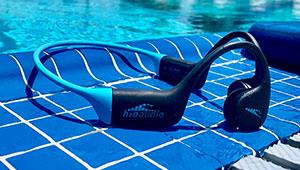
Ready to start training for your first 5K? Download the Couch to 5K app for Apple or Android today.
This might be your first time running, or a return to running. The less running you've done recently, the more you can expect to improve. However, you're also at a higher risk for injury by doing too much too soon. This is why it is important to start with a good aerobic base.
Beginners shouldn't worry about how many miles to run; they should begin by running for time, not distance.
For starters, purchase a good pair of running shoes designed for your arch and stride type. If you're not sure which type of shoe you need, visit a local running specialty store to get fitted properly. Good socks are as important as good shoes. Look for socks that are seam-free, and ones that manage moisture so you won't get blisters.
More: Running Gear for Beginners: The Essential, Helpful and Fun
Your Pre-Run Routine
Before you start a run, you need a good warm-up routine, which includes dynamic stretching to get the blood flowing. Leave the static stretching for the post-run routine. Dynamic stretching includes walking lunges, butt kicks, high knees and toy soldiers—straight-leg kicks that stretch the hamstrings. Dynamic stretching will increase your flexibility and help prevent injuries by strengthening your muscles and joints. After doing some dynamic stretching, walk briskly for five minutes, then speed up to a comfortable jogging or running pace.
More: Before You Run: The Dynamic Warm-up
Your First Runs
You can start your aerobic base building by doing a run/walk plan, like the successful Couch to 5K plan. A good first week of running is 20 to 30 minutes total of jogging/running/walking three times a week. Be sure to space your training days throughout the week to give yourself a chance to recover and rest.
More: 5 Things to Expect as You Train for Your First 5K
Don't worry about how fast you are running. Speed will come later once your aerobic base has improved. Just increase the duration of your runs gradually. It is important that your first runs should be completed at an effort and pace that is easy and comfortable. Most beginners don't know what an easy or comfortable pace should be so they tend to push too hard. A comfortable pace is one you feel confident you can sustain for the duration of your run. It is better to run too slow and finish feeling like you could have gone longer or faster, rather than finishing exhausted. A simple way to determine your pace and effort is to listen to your breathing. If you aren't gasping for air and you can talk while you're running, then your pace is just right.
Don't be afraid to walk. Walking breaks the run into smaller, more doable pieces. These breaks will allow you to run longer and faster. Walking breaks work best if you walk for one to five minutes.
More: How to Execute a Run/Walk Program Properly
When you finish your first run, don't stop suddenly. Instead, walk for another five minutes to cool down gradually.
- 1
- of
- 2
About the Author

Get ACTIVE on the Go


Couch to 5K®
The best way to get new runners off the couch and across the finish line of their first 5K.
Available for iOS | Android








Discuss This Article